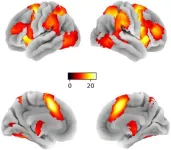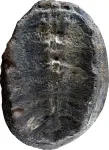(Press-News.org) A partnership between ophthalmology researchers at the University of Colorado School of Medicine and Johns Hopkins University expands the understanding of how oxidative stress contributes to the development of choroidal neovascularization (CNV) in patients with age-related macular degeneration (AMD).
To study the roles oxidative stress, a condition in which the body lacks antioxidants, and hypoxia play in the progression of AMD, Johns Hopkins University researchers turned to CellSight, the ocular stem cell and regeneration research program in the CU Department of Ophthalmology, for tools that allow researchers to explore specific conditions relevant to AMD.
Using human-induced pluripotent stem cells, a type of stem cells that are generated or induced-from cells obtained from an adult person's skin or blood, CellSight investigators can recreate human retinal tissue in the lab.
“We generate retinal organoids, which can be described as mini retinas in a petri dish, that mimic the cellular organization of the human retina and are capable of responding to light," explains CellSight researcher Miguel Flores-Bellver, PhD, assistant professor of ophthalmology. "We also have another tool, retinal pigment epithelium tissue, also derived from stem cells. By subjecting these retinal organoids and the retinal pigment epithelium tissues to oxidative stress and hypoxia, we can mimic pathological conditions that promote the development of AMD and contribute to the research our colleagues at Johns Hopkins are conducting."
The research, published in Proceedings of the National Academy of Sciences (PNAS) in December, marks a step forward in better understanding AMD, a leading cause of vision impairment across the world, and highlights the vital role retinal organoids can play in finding a treatment for millions of people who are diagnosed with the debilitating disease.
Impact of retinal organoids in research
The mini human retina system developed by CellSight researchers in 2014 quickly became a landmark in the field of stem cells and modeling retinal diseases. The most recent endeavor with Johns Hopkins researchers allowed the CU faculty members to showcase once again the range of applications and impact that their retinal organoid technology has in ophthalmology research, by controlling the conditions the organoids are in. In this case, that meant limiting the amount of oxygen to mimic a hypoxic condition.
“It’s a very tunable system,” Flores-Bellver says of the process used to grow the organoids. “By inducing hypoxia, it helped trigger mechanisms that allowed us to identify possible ways to prevent the development or the progression of the disease.”
The ability to mimic the conditions associated with AMD is significantly helpful to researchers, adds CellSight director Valeria Canto-Soler, PhD, associate professor of ophthalmology and Doni Solich Family Chair in Ocular Stem Cell Research.
“It’s quite meaningful to be able to tangibly use these systems and confirm that they have the capacity to mimic mechanisms that are involved in human diseases,” she says. “It also gives us some insight on other mechanisms that could eventually be manipulated to discover further treatments for AMD.”
A perfect partnership
Canto-Soler and Flores-Bellver say the work with Johns Hopkins is a natural fit. The study concludes that “a careful balance of hypoxia-inducible factor levels must be maintained to prevent vision loss in the eyes of patients with AMD” and that modulation of hypoxia-inducible factor may be an effective therapeutic approach for the treatment or prevention of AMD.
CellSight members Silvia Aparicio-Domingo and Timothy Domashevich also contributed to the study. The team hopes the work will lead to more breakthroughs for AMD researchers and, ultimately, the patients who live with the disease.
“We need to understand more about AMD, because it is the leading cause of blindness in the developed world and projections show that even more people will have the disease in the next decade,” Flores-Bellver says. “Our goal at CellSight is to keep uncovering the mechanisms that contribute to the disease’s progression so that one day we can stop it.”
“It’s exciting,” Canto-Soler says of the research. “The possibility of finding cures for patients is what motivates us to get to work every day.”
END
CU's CellSight contributes light-sensitive retinal organoids and RPE cells to new AMD study
2023-12-07
ELSE PRESS RELEASES FROM THIS DATE:
Novel stem cell therapy using technology from mRNA COVID-19 vaccines may stimulate natural repair in treatment of chronic and acute liver disease
2023-12-07
BOSTON – Mortality related to end stage liver disease is ranked as the 12th most common cause of death in the U.S. Liver transplantation remains the only treatment for end stage liver disease, but there is a critical shortage of organ donors, necessitating a dire need for new forms of treatment.
New research from Boston Medical Center and Boston University Chobanian & Avedisian School of Medicine’s Center for Regenerative Medicine (CReM) found evidence that a novel stem cell treatment, using mRNA technology encapsulated into nanoparticles (LNP) that was ...
Unlocking brain secrets: New insights into how our minds control impulses
2023-12-07
Published in the 2023 Volume 3 issue of Psychoradiology a team of dedicated researchers from The University of Hong Kong and The University of Electronic Science and Technology of China has conclusively identified the right inferior frontal gyrus (rIFG) as a key input and causal regulator within the subcortical response inhibition nodes. This right-lateralized inhibitory control circuit, characterized by its significant intrinsic connectivity, highlights the crucial role of the rIFG in orchestrating top-down cortical-subcortical control, underscoring the intricate dynamics of brain function in response inhibition.
In ...
How the first contact of the virus influences the immune response to new SARS-CoV-2 variants
2023-12-07
Although SARS-CoV-2 is no longer a stranger to the immune system, new virus variants still pose a challenge. The working group led by Professor Dr Florian Klein, Director of the Institute of Virology at the University Hospital Cologne and the Faculty of Medicine, has now published two studies investigating how the antibody response to SARS-CoV-2 changes over time and how the immune system is preparing itself for new variants with clever strategies. The work has been published under the title ‘Enhanced ...
Sage partners with Overton on free-to-use tool that empowers researchers to uncover their policy impact
2023-12-07
Sage has launched a tool to empower researchers to discover the real-world impact of their work on policy. Sage Policy Profiles lets researchers easily see specific citations of their work in policy documents and then illustrate and share that work’s impact graphically. The tool is powered by Overton, which hosts an extensive repository of global policy documents, guidelines, think-tank publications, and working papers.
The free-of-charge, browser-based tool shows researchers where their work appears in evidence-based policies, offering insights into how policymakers make use of their research. Sage Policy Profiles presents these results ...
New open-source platform cuts costs for running AI
2023-12-07
ITHACA, N.Y. – Cornell University researchers have released a new, open-source platform called Cascade that can run artificial intelligence models in a way that slashes expenses and energy costs while dramatically improving performance.
Cascade is designed for settings like smart traffic intersections, medical diagnostics, equipment servicing using augmented reality, digital agriculture, smart power grids and automatic product inspection during manufacturing – situations where AI models must react within a fraction of a second.
With the rise of AI, many companies are eager to leverage new capabilities but worried about the associated computing ...
NIH study suggests maternal inflammation risk factors associated with children's behavioral and emotional regulation
2023-12-07
Maternal inflammation risk factors may be associated with dysregulation in children, according to a study funded by the Environmental influences on Child Health Outcomes (ECHO) Program at the National Institutes of Health. “Dysregulation” in this context refers to children’s attention, anxiety and depression, and aggression being measurably different from what is typically expected at their age.
While inflammation is a normal bodily response to injury or infection, ECHO investigators wanted to learn whether factors linked ...
Cancer: Towards a new treatment for leukaemia
2023-12-07
Around 320,000 new cases of leukaemia, a type of blood cancer that can affect all population groups, are diagnosed every year in Europe. In children, cases of leukaemia make up a third of diagnosed cancers. Chemotherapy is the main treatment for leukaemia. Often, the exact cause cannot be identified and the molecular and cellular mechanisms responsible for leukaemia remain shrouded in mystery. Discovering new detection methods and new treatments to eradicate leukaemia is therefore a major challenge in oncology.
Messenger RNA has been in the news in recent months, in connection with COVID-19 vaccinations. In an article published in Molecular Cell, researchers ...
Wasps that recognize faces cooperate more, may be smarter
2023-12-07
ITHACA, N.Y. – A new study of paper wasps suggests social interactions may make animals smarter. The research offers behavioral evidence of an evolutionary link between the ability to recognize individuals and social cooperation.
Furthermore, genomic sequencing revealed that populations of wasps that recognized each other – and cooperated more – showed recent adaptations (positive selection) in areas of the brain associated with cognitive abilities such as learning, memory and vision.
The study focused on two distinct populations of paper wasps (Polistes fuscatus): A southern ...
Key to fatty liver disease and its consequences for billions of people
2023-12-07
Key to fatty liver disease and its consequences for billions of people
The global rise in obesity and diabetes is leading to an epidemic in fatty liver disease affecting 20-30 per cent of the world’s population. Almost a third of people with fatty liver disease go on to develop an advanced form of the disease, known as non-alcoholic steatohepatitis (NASH) that can progress to cirrhosis and end-stage liver disease, or even liver cancer, and is a major risk factor for cardiovascular disease.
Why some people remain relatively healthy with fatty liver disease and some go onto potentially life-threatening illness has been a mystery. Until now.
A study ...
It turns out, this fossil plant is really a fossil baby turtle
2023-12-07
From the 1950s to the 1970s, a Colombian priest named Padre Gustavo Huertas collected rocks and fossils near a town called Villa de Levya. Two of the specimens he found were small, round rocks patterned with lines that looked like leaves; he classified them as a type of fossil plant. But in a new study, published in the journal Palaeontologia Electronica, researchers re-examined these “plant” fossils and found that they weren’t plants at all: they were the fossilized remains of baby turtles.
“It was truly surprising to find these fossils,” says Héctor Palma-Castro, a paleobotany student at the Universidad Nacional de Colombia.
The plants in question ...

